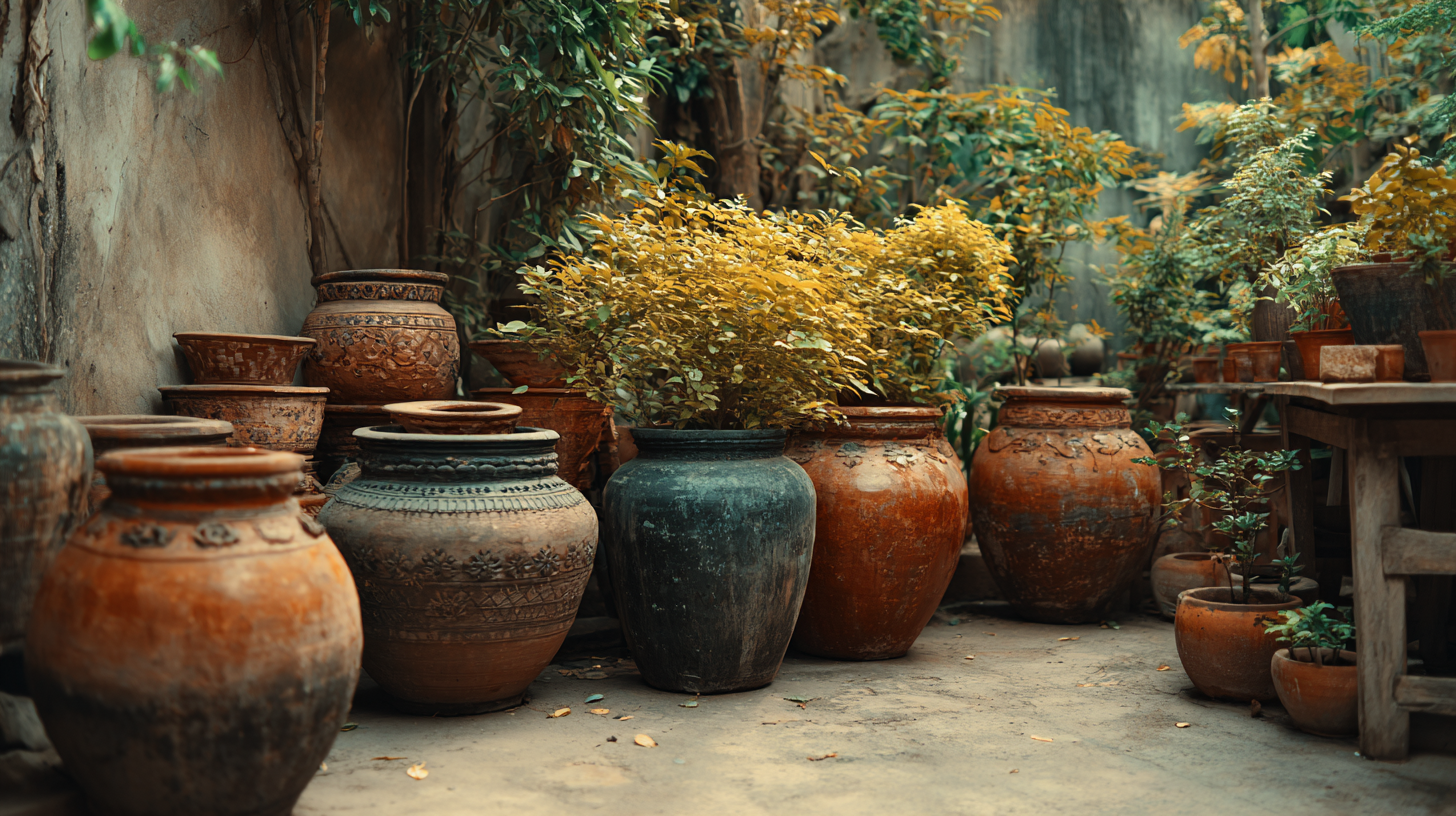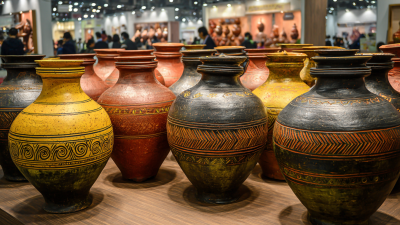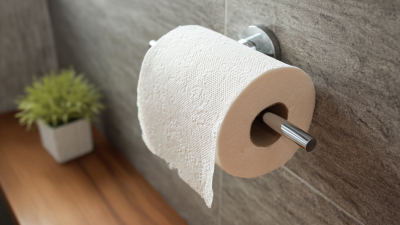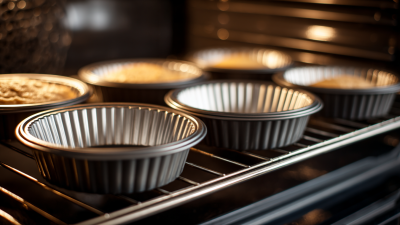The use of earthen pots in gardening has transcended mere aesthetics, becoming a vital component in sustainable gardening practices. According to a report by the National Gardening Association, approximately 77% of U.S. households engage in some form of gardening, highlighting a growing trend towards eco-friendly methods.
 Earthen pots, with their porous structure, promote better air circulation and moisture retention, making them ideal for various plant species. Furthermore, studies have shown that plants grown in earthen pots often experience healthier growth and enhanced root development due to the natural properties of the material. As gardeners increasingly prioritize sustainability and visual appeal, the integration of earthen pots not only transforms outdoor spaces into beautiful gardens but also aligns with the principles of environmental stewardship. This guide delves into the myriad ways to leverage earthen pots to create stunning, serene gardens.
Earthen pots, with their porous structure, promote better air circulation and moisture retention, making them ideal for various plant species. Furthermore, studies have shown that plants grown in earthen pots often experience healthier growth and enhanced root development due to the natural properties of the material. As gardeners increasingly prioritize sustainability and visual appeal, the integration of earthen pots not only transforms outdoor spaces into beautiful gardens but also aligns with the principles of environmental stewardship. This guide delves into the myriad ways to leverage earthen pots to create stunning, serene gardens.
 Earthen pots, often crafted from natural clay, promote sustainable gardening practices that significantly benefit plant growth. By allowing air and moisture to circulate, these pots create an ideal environment for roots to develop. Their porous nature provides a balance of drainage and water retention, ensuring that plants receive the necessary hydration without the risk of root rot. This natural balance is essential for healthy plant development, reducing the need for chemical fertilizers and excessive watering.
Earthen pots, often crafted from natural clay, promote sustainable gardening practices that significantly benefit plant growth. By allowing air and moisture to circulate, these pots create an ideal environment for roots to develop. Their porous nature provides a balance of drainage and water retention, ensuring that plants receive the necessary hydration without the risk of root rot. This natural balance is essential for healthy plant development, reducing the need for chemical fertilizers and excessive watering.
Additionally, the use of earthen pots supports eco-friendly gardening by utilizing biodegradable materials. Unlike plastic pots, which contribute to environmental pollution, earthen pots decompose over time, enriching the soil as they break down. This not only diverts waste from landfills but also improves soil structure and nutrient availability for plants. Embracing earthen pots thus fosters a sustainable approach to gardening, where both plants and the planet thrive in harmony.
When it comes to gardening, the choice of pots can significantly impact the health of your plants and the aesthetics of your garden. Here are five essential benefits of using earthen pots over plastic in garden design. Firstly, earthen pots are porous, allowing for better air circulation and moisture regulation. This natural breathability helps to prevent root rot and provides a healthier environment for your plants.

Additionally, earthen pots provide superior temperature control. They can keep the soil cooler in summer and warmer in winter, promoting consistent growth throughout the seasons. This is especially beneficial for delicate plants that may struggle with temperature fluctuations.
Tips for choosing the right earthen pots include selecting the appropriate size based on the plants' root systems and ensuring that they have proper drainage holes. Consider adding a layer of gravel at the bottom to enhance drainage. Also, remember to season your new pots by soaking them in water for a few hours before planting. This helps to minimize moisture loss and improves the health of your plants. Embracing earthen pots in your garden design not only enhances plant vitality but also adds a timeless charm to your outdoor space.
Creating beautiful gardens with earthen pots not only enhances aesthetics but also promotes healthy plant growth through effective drainage and soil management. Drawing inspiration from ancient Egyptian farming techniques, gardeners can utilize earthen pots to optimize their arrangements and irrigation. The pot's porous nature allows for better aeration and moisture retention, which aligns with the Egyptians' ability to manage Nile floods for irrigation.
To maximize drainage and soil health, consider layering your pot. Start with small stones or gravel at the bottom to prevent waterlogging. This mimics the ancient Egyptians' use of well-drained soils, ensuring that excess water flows out while retaining some moisture for plant roots. Additionally, incorporating organic matter such as compost can enrich the soil, much like the fertile silt deposited by the Nile, enhancing nutrient availability.
Another effective technique is grouping pots together. This not only creates a microclimate that can help retain humidity but also facilitates companion planting, where certain plants benefit from each other's presence. This ancient practice of crop diversity can lead to better overall health and yield, while earthen pots provide the perfect container to implement these principles in your own garden.
When comparing earthen pots to traditional planting methods, one significant advantage is their superior water retention capabilities. Earthen pots, made from natural clay, allow for slow evaporation, ensuring the soil remains moist for a longer time. This is particularly beneficial in hot weather or during dry spells, as it helps to reduce the frequency of watering, saving both water and effort. In contrast, traditional methods often require more frequent irrigation to maintain optimal soil moisture, making earthen pots an eco-friendly alternative.
Tips for improving water retention in earthen pots include using a layer of gravel at the bottom for drainage and mixing organic matter such as compost into the soil. This not only enhances moisture retention but also improves soil health. Additionally, consider placing a shallow dish under the pots to catch excess water, allowing the plants to absorb moisture as needed.
Incorporating mulch on top of the soil within earthen pots can further minimize evaporation and keep the roots cool, especially during the peak summer months. By utilizing these methods, gardeners can achieve beautiful and vibrant gardens while conserving water and maintaining healthy plants.
| Aspect | Earthen Pots | Traditional Planting Methods |
|---|---|---|
| Water Retention | Excellent | Good |
| Soil Ecosystem | Supports Natural Microorganisms | Limited Support |
| Aeration | Good Aeration | Variable Aeration |
| Temperature Regulation | Effective Insulation | Moderate Insulation |
| Maintenance | Low | Moderate to High |
| Cost | Low Initial Investment | Higher Initial Investment |
Creating a visually stunning garden can be achieved effortlessly with the incorporation of earthen pots. These natural materials not only enhance the aesthetic appeal but also provide an eco-friendly solution for gardening. Among the myriad of designs, some stand out vividly. One of the most popular is the rustic terracotta pot, which brings warmth and a timeless feel, making it perfect for traditional garden themes. The earthy texture complements vibrant flowers, creating a harmonious and inviting space.
Another captivating design is the patterned glazed earthen pot, which adds a touch of elegance and color. These pots can serve as focal points in your garden, drawing attention to your carefully selected plants. Vertical earthen pots, which allow for creative stacking, are ideal for small spaces, offering a striking visual element while maximizing your planting area. With such diverse designs available, transforming your garden into a serene and beautiful retreat is only a pot away.






